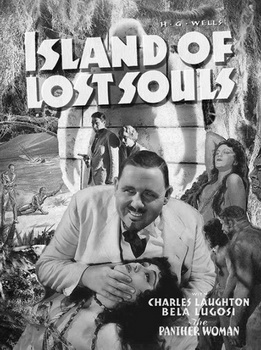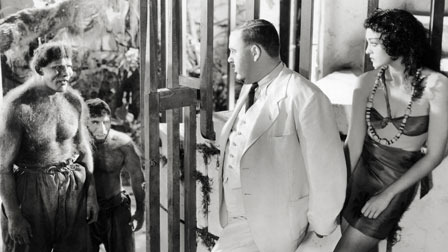
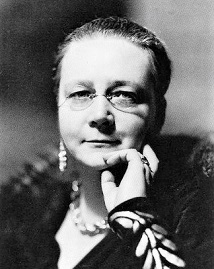 Suspense (1942-1962) aired “The Man Who Knew How” on December 8, 1944 as the 104th of its well over 900 episodes. As mentioned in many of the 40+ episodes of Suspense presented here, it was one of the most well produced, written, acted, and critically acclaimed of all radio shows during the Gold Age of Radio, many a film star jumping at the chance to perform in an episode of Suspense, among them Cary Grant, Orson Welles, Jimmy Stewart, Susan Hayward, Vincent Price, Charles Laughton, Loretta Young, Peter Lorre, and Rita Hayworth. After many another radio show had gasped its last during the 1950s, Suspense finally closed shop in September of 1962 whereupon radio historians proclaimed the Golden Age of Radio dead, television having become the medium of choice in America.
Suspense (1942-1962) aired “The Man Who Knew How” on December 8, 1944 as the 104th of its well over 900 episodes. As mentioned in many of the 40+ episodes of Suspense presented here, it was one of the most well produced, written, acted, and critically acclaimed of all radio shows during the Gold Age of Radio, many a film star jumping at the chance to perform in an episode of Suspense, among them Cary Grant, Orson Welles, Jimmy Stewart, Susan Hayward, Vincent Price, Charles Laughton, Loretta Young, Peter Lorre, and Rita Hayworth. After many another radio show had gasped its last during the 1950s, Suspense finally closed shop in September of 1962 whereupon radio historians proclaimed the Golden Age of Radio dead, television having become the medium of choice in America.
Crime and mystery novelist Dorothy L. Sayers (1893-1957, photo top right) saw “The Man Who Knew How” published in the February 1932 issue of Harper’s Bazaar. It tells the story of one Mr. Pender (played by the brilliant stage and film actor Charles Laughton*–1899-1962, photo below left), a man who reads and collects contemporary first editions. Mr. Pender meets a stranger on a train and, being of a friendly nature, asks if the stranger would care to read a book Pender has along with him, as something the stranger might occupy his time on the train. The book is a murder mystery, and though not impolite, the stranger refuses Pender’s offer, proclaiming his dislike for murder mysteries because the murderer always gets caught in the end. The stranger then explains that it would be more interesting to write about a perfect murder where the villain escapes, and proceeds to tell our Mr. Pender how such a perfect murder might be achieved. Over the next few days a series of deaths make headlines in the newspapers, all of the deceased dying in the identical manner in which the stranger has described to Mr. Pender–and all seeming by natural causes. At each of the scenes the stranger has appeared, setting Pender off on a wild set of speculations. Could it be the stranger is indeed a murderer? Could it be mere coincidence that he shows up at each death? Could the deaths themselves be naught but sheer coincidence? Or is the connection between the seemingly mundane deaths and the appearance of the stranger at each of them a bizarre phenomenon that can be explained by something else entirely, and if so what? A puzzling tale indeed, one whose answers are revealed at the very end, as Mr. Pender unfortunately discovers whether or not a stranger he met on an innocent train ride really did know how to commit the perfect murder!
*Charles Laughton is also of interest to genre fans as the star of the 1932 (pre-code) film Island of Lost Souls. Based on the 1896 H. G. Wells novel, the film is creepily atmospheric in its macabre depiction of the mad Dr. Moreau, who (with much pain and torture to his subjects) attempts to turn animals into human beings but with horrific results. Also of genre interest is Bela Lugosi, fresh of his legendary role in 1931’s Dracula, as one of Moreau’s mutated beasts. Clicking on this link will take you to a short video of selected scenes from Island of Dr. Moreau.
Play Time: 29:40
{After a hot, sweaty August afternoon playing baseball at the corner lot, our neighborhood future All-Stars, gloves and bats in hand, headed for the corner drugstore for some of their favorite reading material and a nice, cold fountain Coke to slake their dusty throats as they flipped through them, before heading home for dinner. Always a favorite, Astounding SF (1930-present, now Analog) always stoked a sense of wonder, and this issue was no exception with its new Isaac Asimov Foundation story. Astounding was a monthly in 1944. For sheer excitement, colorful craziness where logic didn’t matter, and imagination-run-wild adventure, Startling Stories (1939-1955) and Thrilling Wonder Stories (1936-1955) couldn’t be beat. As the covers below readily attest, menace and monsters were the order of the day, not to mention the obligatory hero saving the pretty girl. Both were quarterlies in 1944.}
[Left: Astounding, Aug. 1944 – Center: Startling Stories, Summer 1944 – Right: Thrilling Wonder, Summer 1944]
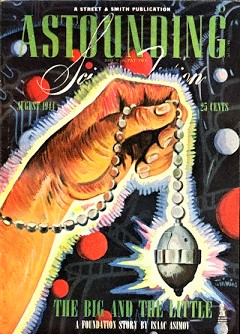
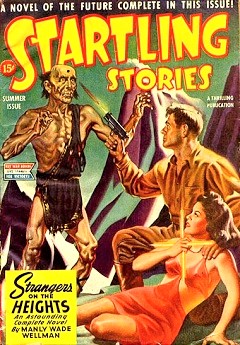
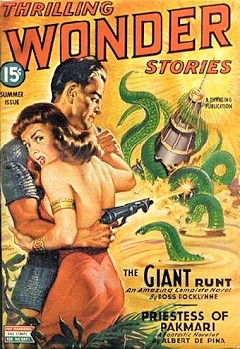
To view the entire list of weekly Old Time Radio episodes at Tangent Online, click here.
